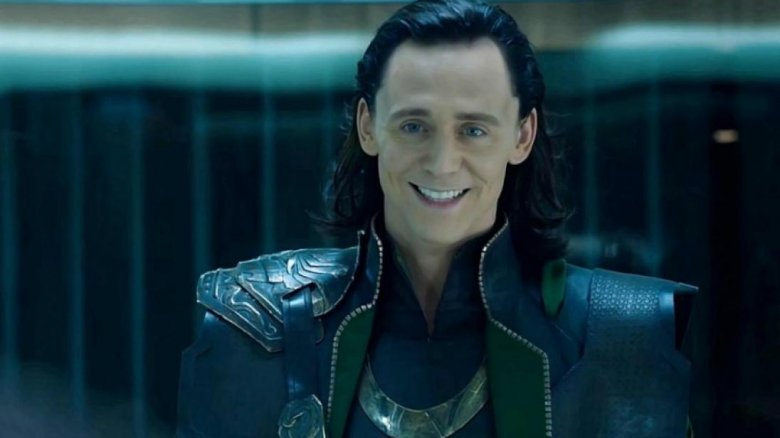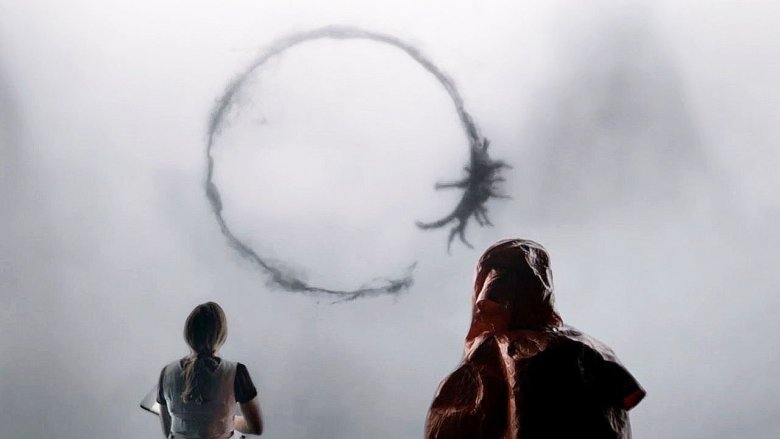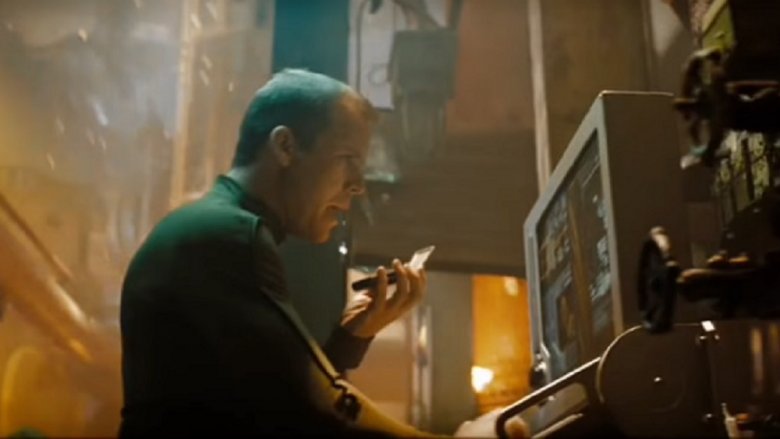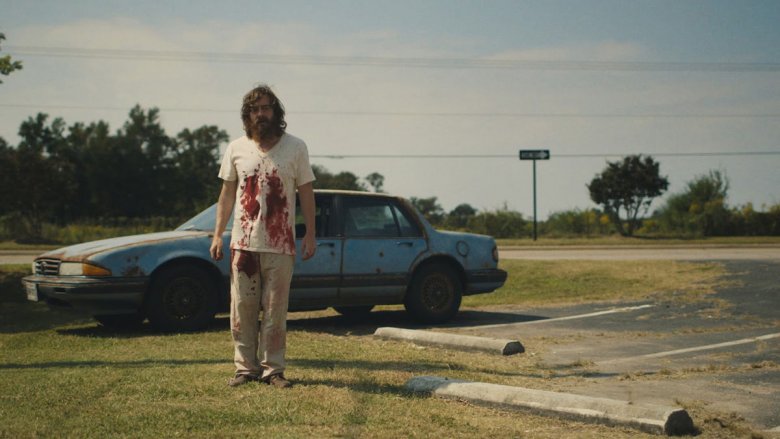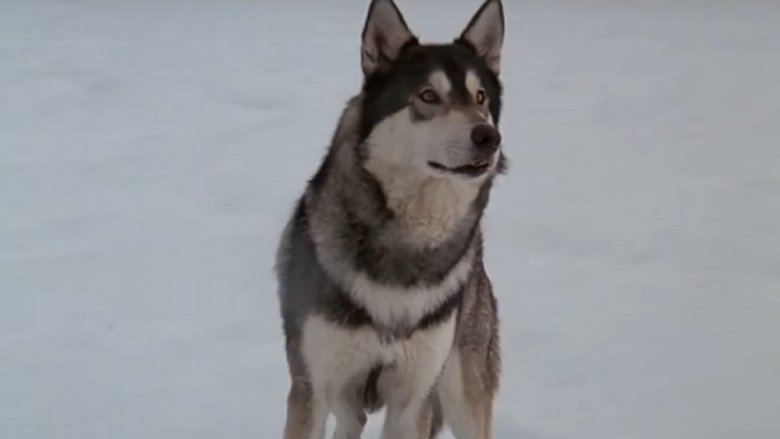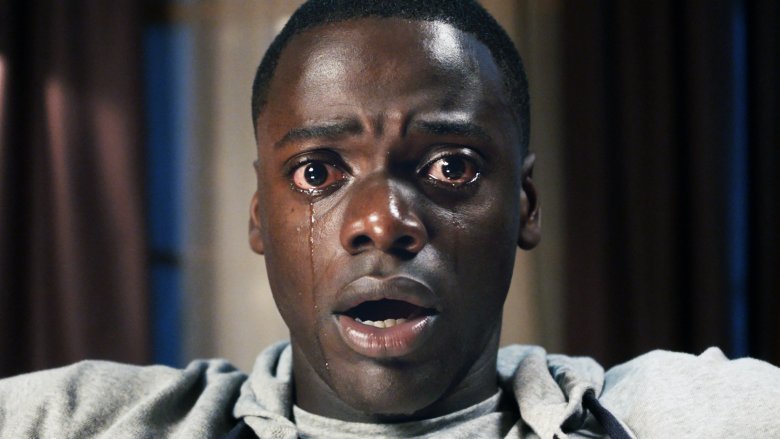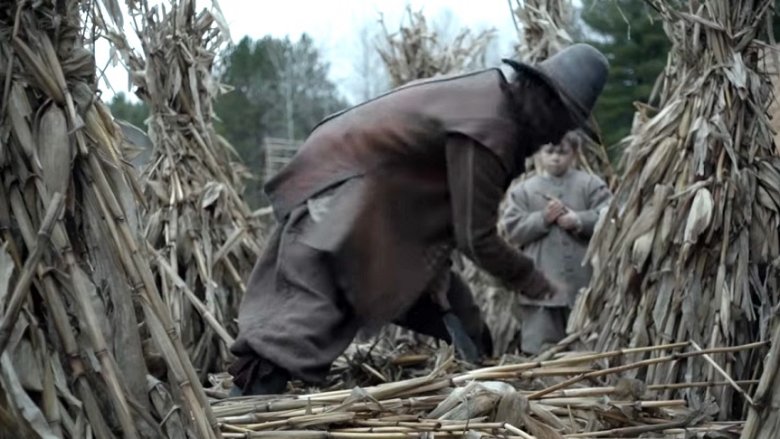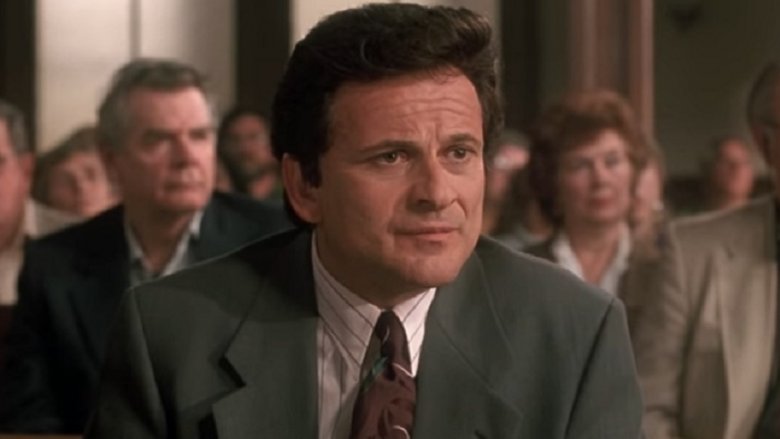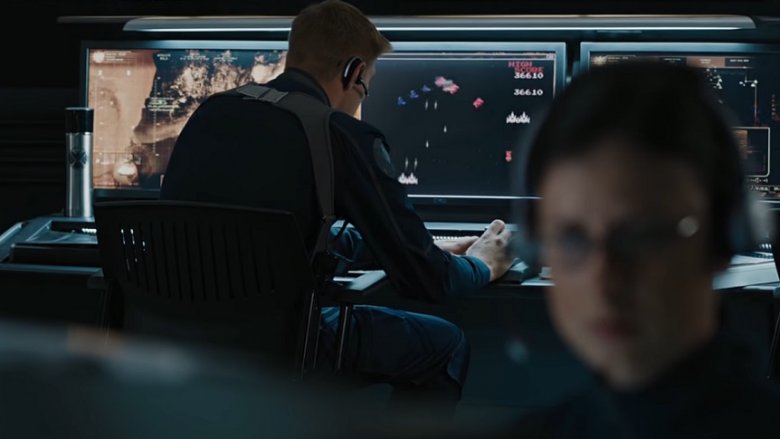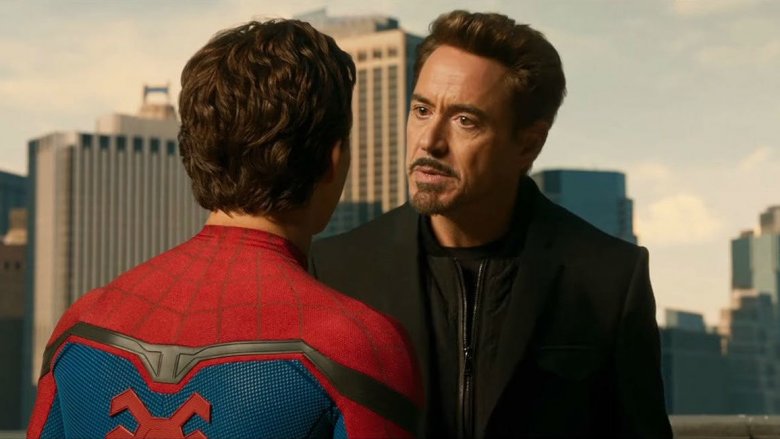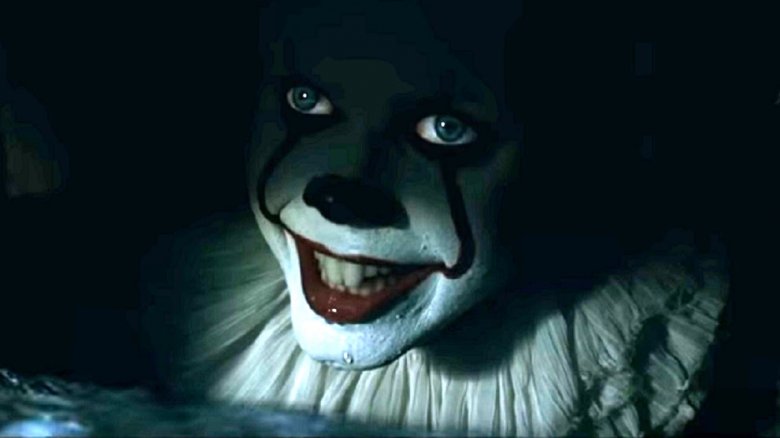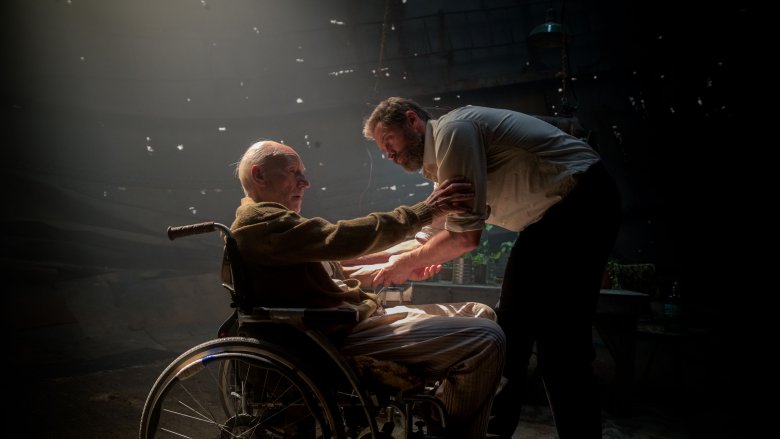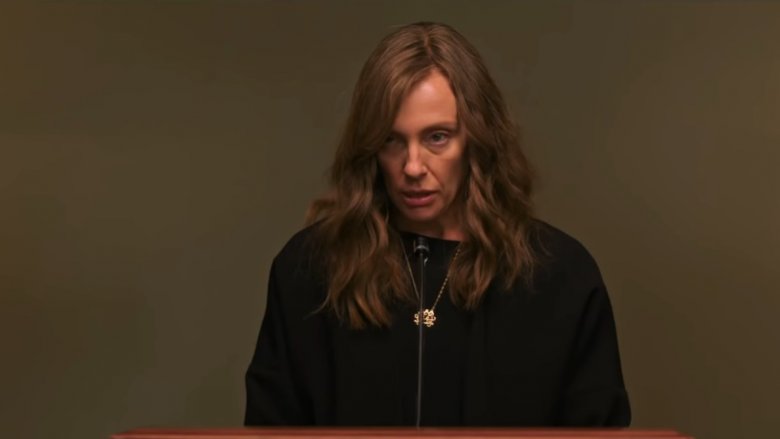Seemingly Insignificant Movie Details With More Meaning Than You Realize
Unless you're a professional script supervisor, film critic, or some kind of artificial intelligence, a good number of details in many films probably get past you, even upon repeat viewings. Most of us enjoy simply letting a good story kind of wash over us, and too much attention to detail can take us out of the narrative; it may be for this reason that some of our favorite films appear to be riddled with plot holes, when in actuality, we simply missed the explanation or foreshadowing that would've made certain moments make more sense.
However, it can greatly deepen our enjoyment of a film when we're in the hands of a filmmaker who knows how to lead up to crucial plot points or build upon their film's themes with small, unassuming moments that don't reveal their significance until later. With that in mind, here's a look at the most rewarding not-so-minor moments in great pictures — those seemingly random, throwaway details that happened to be a lot more important than you realized.
Warning: Spoilers abound.
Arrival
2016's Arrival gave us a heady sci-fi scenario: when 12 alien spacecraft descend upon different points of the Earth, the U.S. military recruits expert linguist Louise Banks (Amy Adams) to attempt to decipher their inhabitants' communications, which appear as circular, complex glyphs. Other nations are also in on the effort, which takes a harrowing turn when the alien beings — which have been dubbed "heptapods" — appear to make a reference to using a weapon, prompting suspicion and discord amongst the participating nations. None of them are able to agree on the interpretation — but it's alluded to in the cheeky nicknames given to the two aliens attempting to communicate with the American team.
They're called "Abbott" and "Costello," which is obviously a reference to the famous comedy duo — whose most iconic sketch, "Who's on First?" was essentially one long series of humorous miscommunications. Of course, there's nothing remotely funny about the garbled message from heptapod to humanity; it almost results in a nuclear assault on the alien vessels, and the extreme bungling of first contact with beings which were not threatening the use of a weapon, but offering the use of a "tool" (their language, which enables humans to perceive the future as well as the past). The seemingly minor detail of the nicknames given to the creatures serves as a cue to sharp audiences that the message these creatures are trying to get across is in no way being properly received.
Star Trek (2009)
J.J. Abrams' 2009 Star Trek reboot wowed audiences with a killer explanation for presenting the original Enterprise crew played by younger actors: it takes place in an alternate timeline, freeing the filmmakers from worries over continuity and allowing them to craft an updated take on Trek with familiar characters. But rather than simply establishing that we're in an alternate timeline and leaving it at that, the original timeline's disruption was made a key story element. The film opens with the Starfleet vessel USS Kelvin under assault from the ruthless villain Nemo, before the events of the original series; the crew are confused when their attacker demands information on an "Ambassador Spock," whom nobody has ever heard of. First officer George Kirk (Chris Hemsworth), fearing the worst, arranges for his wife (who is pregnant with future Enterprise captain James T. Kirk) to be evacuated shortly before the Kelvin is destroyed.
One clue to the film's timeline-shifting conceit comes in these first moments. Two characters can briefly be seen using communicators, which look identical to the ones from the original Star Trek series — but as it turns out, Nero jumped timelines in order to stage his assault, and his incursion had consequences. After his attack, the timeline he jumped into was subtly altered — the strongest visual evidence of which is the communicators, which look completely different from the originals every time we see them thereafter. It's a blink-and-you'll-miss-it clue, but one that brilliantly helps establish the film's premise in its first few minutes.
Blue Ruin
Blue Ruin, the second feature from director Jeremy Saulnier, firmly established his reputation as a merciless master of steadily increasing tension. In its first act, we meet Dwight (Macon Blair), a homeless drifter living out of his battered blue Plymouth sedan who exhibits unmistakable signs of profound PTSD. The circumstances that brought him to this place are fleshed out for us by a police officer acquaintance: Dwight's parents were brutally shot to death in their car by local bully Wade Cleland, and his impending release from prison has Dwight's already fragile mental state at the breaking point.
Sharp-eyed viewers may have been able to deduce that Dwight's life had been marred by violent crime, however, within the film's first few minutes. His blue Plymouth looks pretty much like any other cheap, neglected beater car you might see, except for one crucial detail: the bullet holes adorning the drivers' side. It's not just a cheap beater, but the only car available to Dwight... his parents' old vehicle, the very one they were gunned down in. Dwight has literally been living in the memory of their murder, forced to revisit the tragedy day in and day out — which makes his quest for brutal revenge all the more understandable.
The Thing
John Carpenter's The Thing is an absolute master class in suspense (not to mention practical gore effects), and much of the film's tension is mined from the shape-shifting nature of its alien menace and its isolated setting, an Antarctic research base. Trapped together in close quarters, those stationed at the base are forced into a deadly game of hide and seek with a voracious predator capable of impersonating (and consuming) any living organism — a situation which they could easily have avoided if any member of their team spoke Norwegian.
The film opens with a helicopter — one we later learn is being piloted by two men from a neighboring Norwegian base, which has already been attacked and assimilated by the creature — tracking and attempting to kill a dog as it flees over the tundra. It makes its way to the American base, where the puzzled Americans understand nothing of the situation other than that the Norwegians are in a blind panic. One of the men shouts at the Americans in his native language, takes aim with his rifle, and is shot dead in seeming self-defense. If only they had understood what he was saying: "Get the hell away from that thing! That's not a dog, it's some sort of thing! It's imitating a dog, it isn't real! Get away, you idiots!" Given the film's bleak and ambiguous ending, it just might have been the misunderstanding that doomed the planet.
Get Out
Another example of a foreign tongue giving away the plot of the film appears in Jordan Peele's masterpiece Get Out, one of dozens of such details which foreshadow the film's twists and turns or serve to illustrate its themes. In the film, Chris (Daniel Kaluuya), a black man, is invited to the home of his white girlfriend Rose's parents — only to discover that the family is involved in a nefarious plot to hijack the bodies of healthy young black people to host the minds of rich, elderly whites. The subtle cues which Peele heaps on are far too numerous to list here, but one of the most significant occurs in the film's opening moments — and it's not visual, but an audio cue.
The film's main title theme is a piece called "Sikizila Kwa Wahenga," and its Swahili lyrics contain an important message for Chris and the audience. Translated, they are as follows: "Brother, listen to the ancestors. Run! You need to run far! Listen to the truth. Brother, listen to the ancestors — run, run! To save yourself, listen to the ancestors." Peele confirmed in a GQ interview shortly before the film's release that this was fully intentional, saying, "I wanted Michael Abels, who did the score, to create something that felt like it lived in this absence of hope... The words are issuing a warning to Chris. The whole idea of the movie is 'Get out!' — it's what we're screaming at the character onscreen."
The Witch
Robert Eggers' The Witch rewards viewers for paying close attention (as much of its period-accurate 17th-century dialogue is near impenetrable), and it's also prone to taking sudden and hard left turns into the bizarre and surreal. From a dying boy vomiting up a whole apple to an unprovoked and brutal attack by a family goat, events befall the film's hapless family of religious outcasts which seemingly can only be explained by the presence of the supernatural — but in the film's first act, it gives away the possibility that there may be a different explanation.
In an early scene, father William (Ralph Ineson) and son Jonas (Lucas Dawson) are tending to the family's meager crop of corn, which appears to have been affected by some type of fungus. Indeed, it's been noted by some fans that it looks like a very specific type: ergot, which is known to cause a variety of symptoms when ingested including mania, psychosis and hallucinations. It's even been suggested that ergot may have played a role in the events leading up to the actual Salem witch trials, and Eggers himself all but confirmed the theory in a Slate interview: "There are clues about different interpretations. So, for example, the rot on the corn is ergot, which is a hallucinogenic fungus, so if you wanted to take that route, you could."
My Cousin Vinny
My Cousin Vinny is many things: a classic screwball comedy, one of the most surprising Academy Award winners of all time, and the favorite film of pretty much every lawyer on Earth. It stars Joe Pesci in the titular role as an inexperienced, motor-mouthed big-city attorney who must defend his young cousin and the cousin's friend against bogus robbery charges in the deep south, and it sports a number of elements — such as the automotive expertise of Tomei's character — which don't appear relevant until key moments. Among these are a seemingly throwaway exchange between Vinny and a short-order cook during the film's second act, in which Vinny learns the nature of and prep time for grits, a breakfast staple which he claims to have never even seen before.
It becomes important during Vinny's cross-examination of a witness later in the film, as the witness claims to have seen the two boys entering the gas station which was robbed just as he was beginning to make his breakfast — eggs and grits. He goes on to claim to have heard gunshots as he was sitting down to eat, yet also asserts that the boys were in the gas station only for about five minutes. This throws the entirety of his testimony into question, as Vinny now knows that grits take 20 minutes to cook — a discrepancy which Vinny points out with some of the most hilarious dialogue in a movie packed with it.
The Avengers
Marvel's crossover blockbuster The Avengers also features a number of moments which subtly foreshadow later events. In one of its funniest scenes, Tony Stark calls out a S.H.I.E.L.D. agent on the deck of the Helicarrier for playing the arcade game Galaga, which appears to be a simple gag... until, at the scene's end, an agent is seen nervously looking over his shoulder before returning to his game. Galaga is an unwinnable game in which the player must defend against increasingly aggressive swarms of alien invaders, not unlike the task the Avengers face in the film's climax — but the movie's most delicate use of foreshadowing comes down to a brief look on the face of one character.
When the Asgardian Loki arrives to wreak havoc on Earth, he is temporarily subdued by Captain America, Iron Man and Thor and remanded to the custody of S.H.I.E.L.D. When he arrives on the Helicarrier, he meets Bruce Banner for the first time — and favors him with a smirking glance of recognition. This is because Banner is key to his plot to bring the Helicarrier down, as he anticipates that the impending attack by his minions (including a mind-controlled Hawkeye) will trigger Banner's transformation into the Hulk and cause the chaos necessary for his plan to succeed. In one brief, wordless moment, Loki comes close to giving away his entire strategy — and by the time Natasha Romanoff manipulates him into spilling the beans, it's too late.
Captain America: Civil War
The Marvel Cinematic Universe's version of Spider-Man finally made his debut in 2016's Captain America: Civil War, with Tom Holland giving us the most comics-accurate version of the wall-crawler and his genius alter ego Peter Parker to date. When the Avengers are split down the middle over the government initiative to regulate them, Parker is recruited by Tony Stark as a failsafe in the looming fight against the rogue Avenger faction led by Captain America. It's the beginning of what will become a warm, almost father-son relationship between Stark and Parker — and with one nuanced line delivery, Holland clues the audience in to the fact that Parker looks up to Iron Man in a most profound way.
Stark humorously inquires as to Parker's code name, throwing out a bunch of suggestions: "So, you're the Spiderling. Crime-fighting Spider. You're Spider-Boy?" Parker looks positively mortified as he stammers, "S-Spider-Man." But the reason for his embarrassment doesn't come down to his age; so far as he knows, Stark is the only hero to use the "-Man" suffix, implying that Parker has modeled himself after a man who is no less than his idol. Marvel's deal with Sony to share Spidey's film rights even allowed Marvel Studios head honcho Kevin Feige to shed further light on this dynamic: he allowed Holland to confirm that in Iron Man 2, the boy in the Iron Man mask whom Stark saves from a drone outside the Stark Expo was actually a young Parker.
It (2017)
Stephen King's 1986 novel It is widely considered to be one of his greatest works, and its villain — the shape-shifting, inter-dimensional predator which often appears in the guise of Pennywise, the Dancing Clown — among the most terrifying in all of literature. The great Tim Curry ably filled the role in the 1990 TV miniseries adaptation, but for Andres Muschietti's 2017 theatrical adaptation, actor Bill Skarsgård brought whole new dimensions of brain-melting terror to the part. From his very first appearance onscreen, he gives off the distinct vive of a vicious, feral animal merely disguised as a clown — and also gives the audience a clue as to how it subtly manipulates its prey.
Georgie Denbrough, the younger brother of main protagonist Bill, loses his paper boat in a storm drain — but there's something down there, ready to lure him in with the promise of returning it to him. When its eyes — and only its eyes — first appear in the darkness, they're distinctly greenish-yellow, like those of a cat. But when Pennywise steps out of the shadows to reveal itself, the shade of its eyes has changed to blue — the same color as Bill's eyes, all the more effective for convincing Georgie to trust him. Of course, it's the last decision Georgie will ever make — and it just may have been the comforting hue of his brother's eyes that allowed him to let his guard down long enough to make it.
Logan
For the capper on Hugh Jackman's 17-year run as Wolverine, Fox Studios gave us Logan, a desolate, violent, hard-R near-masterpiece that proved to be one of the better superhero films in recent years. Loosely based on the Old Man Logan storyline from the comics, it showed us a grim future for mutantkind: none have been born for a quarter-century, seizures have driven Charles Xavier's telepathy haywire, and it's heavily implied that his episodes have killed off most of the mutants that were left. Xavier is being cared for by Logan and Caliban while hiding out in an abandoned, rusted out mill — and astute viewers may have noticed that its interior is a pretty dead-on visual reference to his earlier years.
The many points of sunlight shining through the holes into the dark interior of the mill are highly reminiscent of Cerebro, the machine Xavier once used to track mutants. Cerebro would render the locations of all mutants worldwide, which appeared as points of light, in three-dimensional space. Not only is the hideout's similarity to its graphical display a poignant reminder of the glory days of the X-Men, but upon further reflection it reveals another, deep layer of sadness: where the lights once represented living beings, they are now just holes... because all of the mutants are gone.
Hereditary
Hereditary manages to pivot from dark family tragedy to supernatural thriller while keeping audiences completely unsure as to whether this is actually what's happening. Near the film's opening, Annie (Toni Collette) is giving a eulogy for her recently deceased mother, a cold, hard woman whom it's implied was afflicted with mental illness. Annie herself begins to spiral out of control when her young daughter Charlie is accidentally killed by her teenage son Peter; as she's sucked into the world of seances by a seemingly well-meaning support group member, things start to get very weird. We can't really be sure, though, if the supernatural goings-on are really taking place or if Annie's mental illness — which is usually, you know, hereditary — is manifesting. That is, unless we were paying attention during her first appearance in the support group.
Annie confides that her brother committed suicide because he thought his mother was trying to drive him crazy and "put people inside his body" — which could be interpreted as schizophrenia... only we later find out that this is exactly what she was trying to do. She was part of a coven searching for a male host for the demon Paimon, "one of the eight Kings of Hell," and by the film's end they've finally found one in Peter. The film's references to mental illness are more or less red herrings, and while Annie's support group monologue isn't the only clue, it's perhaps the most obvious.
